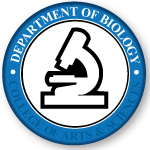Author ORCID Identifier
Document Type
Article
Publication Date
10-29-2020
Publication Title
PLOS ONE
Volume
15
Issue
10
Abstract
Humanized mouse models are used extensively in research involving human pathogens and diseases. However, most of these models require preconditioning. Radio-active sources have been used routinely for this purpose but safety issues have motivated researchers to transition to chemical or X-ray based preconditioning. In this study, we directly compare 350 kV X-ray and Cs-137 low-dose precondition of NOG mice before human stem cell transplantation. Based on flow cytometry data, we found that engraftment of human cells into the mouse bone marrow was similar between radiation sources. Likewise, human engraftment in the peripheral blood was comparable between Cs-137 and three different X-ray doses with equal chimerization kinetics. In primary lymphoid organs such as the thymus and lymph nodes, and spleen, liver and lung, human-to-mouse chimerization was also comparable between irradiation sources. Development of different CD4 and CD8 T cells as well as these cells’ maturation stages, i.e. from naïve to effector and memory subsets were generally analogous. Based on our results, we conclude that there are no discernable differences between the two sources in the low-dose spectrum investigated. However, while we encourage the transition to X-ray-based sources, we recommend all research groups to consider technical specifications and dose-finding studies.
Recommended Citation
Andersen, Anna Halling Folkmar; Nielsen, Stine Sofie Frank; Olesen, Rikka; Harslund, Jakob Le Fèvre; Søgaard, Ole S.; Østergaard, Lars; Denton, Paul; and Tolstrup, Martin, "Comparable human reconstitution following Cesium-137 versus X-ray irradiation preconditioning in immunodeficient NOG mice" (2020). Biology Faculty Publications. 185.
https://digitalcommons.unomaha.edu/biofacpub/185
Creative Commons License

This work is licensed under a Creative Commons Attribution 4.0 License.


Comments
This is an open access article licensed under the Creative Commons Attribution license.
DOI https://doi.org/10.1371/journal.pone.0241375